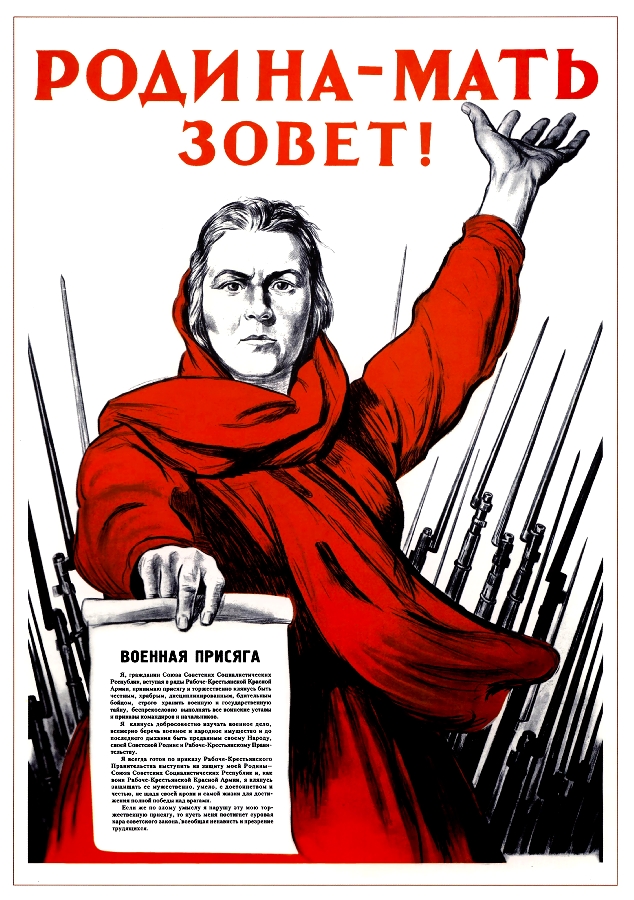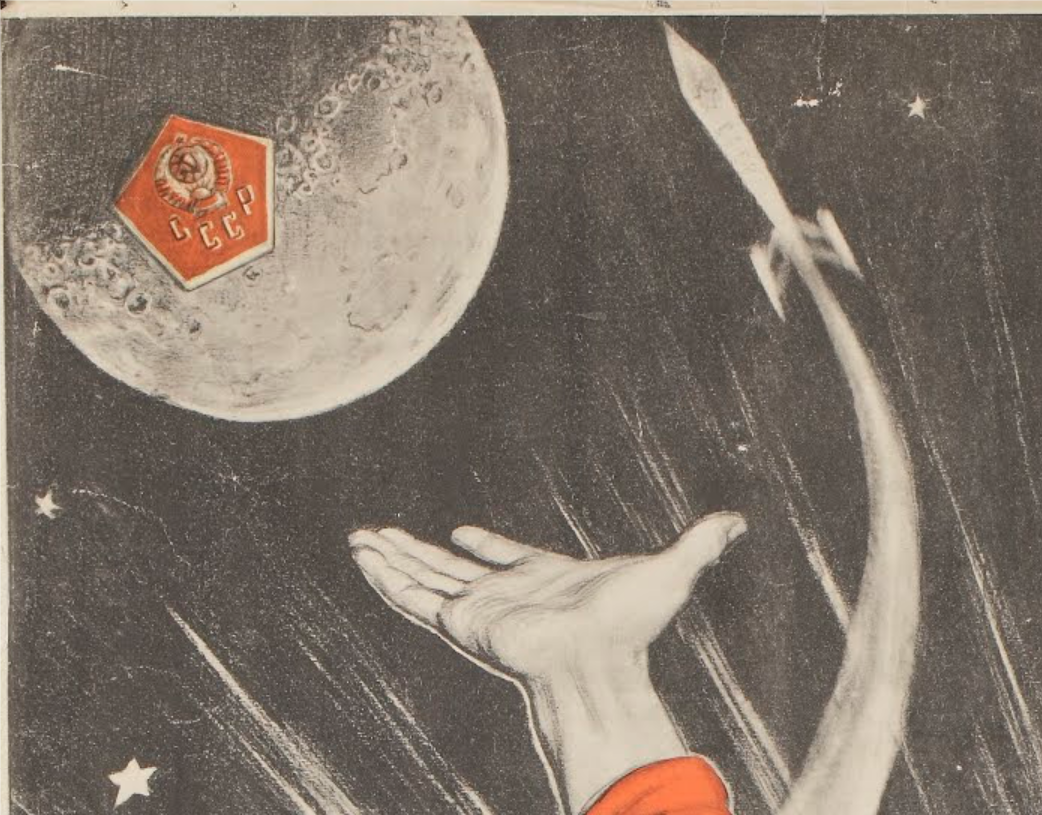On 17th December, 2020, the successful return of lunar samples to earth of Chang’s 5 excited patriots in China as well as people who care about the space programme. The latter kind of people always admire the time of the Space Race between the United States (US) and the Soviet Union (USSR) during the Cold War as a period of dream for the prosperity of space exploration. However, even before USSR’s launch of the first artificial earth satellite Sputnik 1, Americans had been aware of the propaganda potential of space programmes. After officials of USSR seen the great impact of Sputnik 1 on the west, the space programme was related strongly to, even bound up with political propaganda. The first poster for Soviet space programme, In the Name of Peace (see Figure 1, called ‘Peace’ for short later), was created in 1959 by the famous Soviet poster artist, Irakli Toidze. In this poster, such relationship can be revealed.

The phrase on the bottom of this poster, ‘во имя мира’, means ‘In the name of peace’ in English, which is taken as the title of this poster by most people. Natalia Sidlina, one of the curators of the Science Museum’s new exhibition, explains that ‘with the nuclear bomb drops on Japan at the end of WW2 little more than a decade before, Moscow was keen to stress that as far as space exploration was concerned, everything was peaceful.’ In fact, ‘peace’ had always been a keyword in Soviet propaganda. They condemned the west as the threat of world peace and was willing to show that the Soviet is the defender of peace. This propaganda strategy is more apparent in the poster World Peace (see figure 2).

The main part of ‘Peace’ is a woman in red and the sun light behind her. This figure reminds people of another famous poster created by the same artist in World War II, The Mother is Calling Us (see Figure 3, we call it “Calling” for short later), in which a strong woman with a determined and stern expression is raising her hand, showing an intention for lifting or calling for something. Rifles and bayonets in radial arrangement behind her are a sign of the war. As a war mobilization poster, the woman in it is interpreted as the Mother Soviet without doubt. In the ‘Peace’, the woman is generally similar – the raised hand, the strong figure, however, her expression is softer and shows an aura of sanctity. Therefore, the woman can also be interpreted as the motherland but is calling for peace and exploration instead. The sun light behind her is similar to the rifles and bayonets, but indicates hope and peace rather than struggle and war. Nevertheless, the similarity in shape between the light and the weapons still makes the poster seem aggressive, which is actually the style of the Soviet space programme in the background of the Cold War.

Although political factors had been considered when designing the Sputnik 1 – for example, the weight was reduced in order to be launched earlier, especially earlier than America – the great political effect was still out of Soviet leaders’ expectation. The whole western media were shocked – the New York Times reported Sputnik 1 on its cover page with a three-line all capitals header (see Figure 4). As for American, they had considered the public influence of space programme even before the Sputnik. In a report prepared for President Truman in 1952, the US Navy warned that USSR may launch a satellite first and use it for propaganda. As a result, after Sputnik 1, both the USSR and the US started to spend a lot in space programme, and both of them viewed such programme of political importance, which lead to the so called ‘Space Race’.

Two years after Sputnik 1, in 1959, the USSR launched Lunar 1, which was the first spacecraft escaping the Earth’s gravity and reach the vicinity of the Moon. The ‘Peace’ is said to commemorate it. On the upper left corner of the poster lies the Moon and a rocket (see Figure 5). The state emblem of USSR and its Russian abbreviation is stuck on the Moon, showing the political aim directly. The rocket is interesting: it is abstract rather than concrete. This abstract design may be a simultaneous result of propaganda and confidentiality.

More relations to propaganda can be discovered in this poster: the bright colour, the clean lines and the apparent figures are all typical of Soviet posters, for they are created to influence everyone in the country, including, or even especially, one that are not leisured and well-educated.
From the poster one can see how the USSR make full use of the space programme for propaganda. However, such politically practical attitude also had a negative impact on the space exploration and even propaganda itself. It was common in USSR that some scientific components were cancelled for an early launch. In 1958, the American satellite Explorer 1 confirmed the existence of the Van Allen belt, which was of scientific importance as well as had a positive political effect. Today in China, except for ‘what China achieves’, the scientific significance is also a key point in publicity. Scientists mostly hope that there could be less politics but more science in the space programme, but actually such a big project consuming public funds can never, from its birth, get rid of public emotions. It is whether public emotion towards science is positive and healthy that matters.